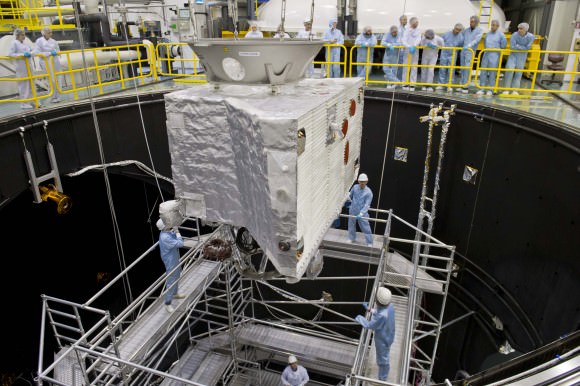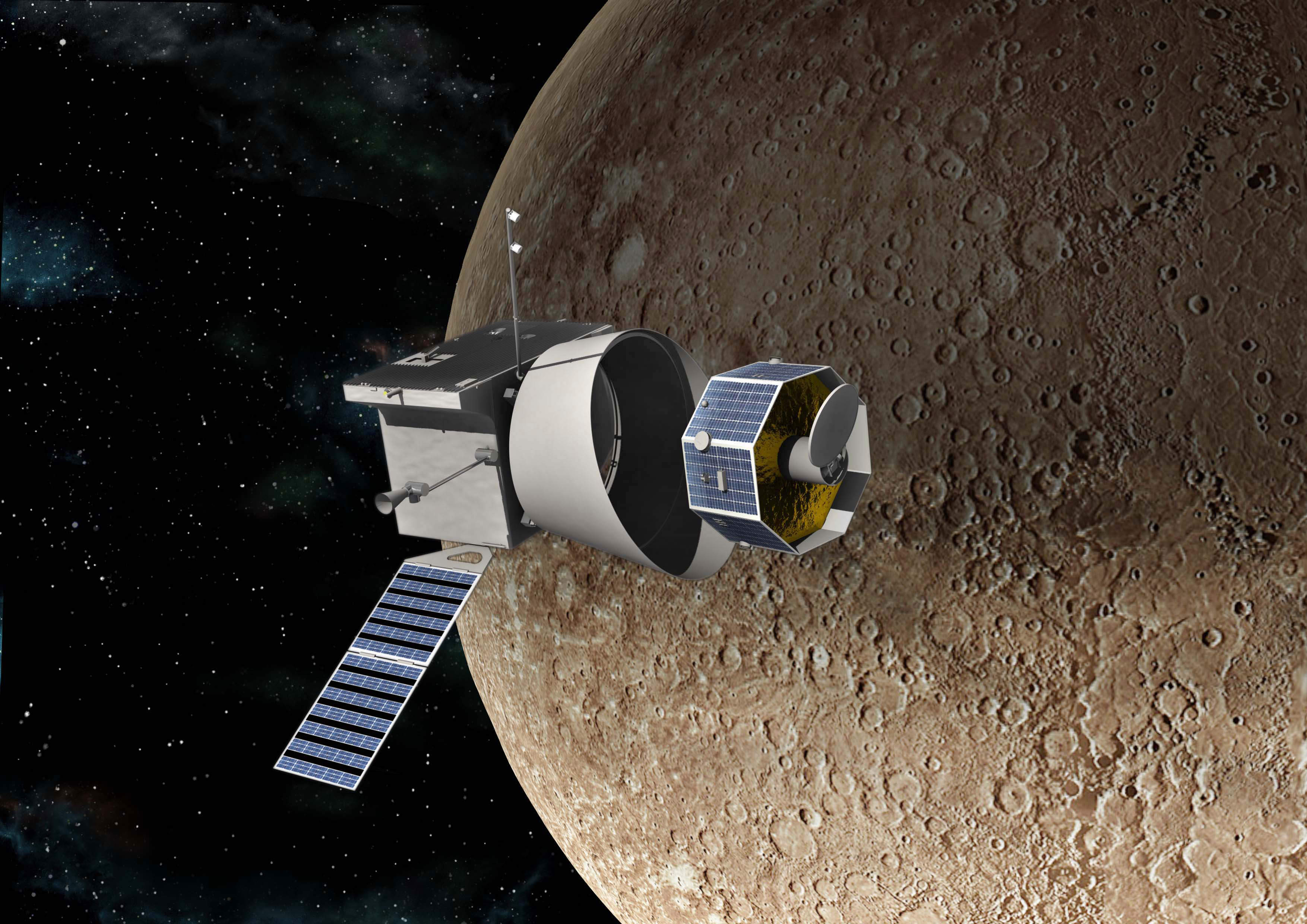After facing down a couple of delays due to technical difficulties, Europe’s and Japan’s first Mercury orbiter is entering some of the final stages ahead of its 2016 launch. Part of the BepiColombo orbiter moved into a European testing facility this past week that will shake, bake and otherwise test the hardware to make sure it’s ready for its extreme mission.
Because Mercury is so close to the Sun, BepiColombo is going to have a particularly harsh operating environment. Temperatures there will soar as high as 350 degrees Celsius (662 degrees Fahrenheit), requiring officials to change the chamber to simulate these higher temperatures. Time will tell if the spacecraft is ready for the test.
BepiColombo is also special because it includes not one orbiting spacecraft, but two. Flying in different orbits, the Mercury Planetary Orbiter and the Mercury Magnetospheric Orbiter will try to learn more about this mysterious planet. NASA’s MESSENGER (MErcury Surface, Space ENvironment, GEochemistry and Ranging) spacecraft has spent the past few years orbiting Mercury, but before then, we had very little information on the planet. (And before MESSENGER, only brief flybys from NASA’s Mariner 10 in the 1970s turned up spacecraft-based information on Mercury.)
MESSENGER has turned up quite a few surprises. It’s showed us more about the nature of Mercury’s tenuous atmosphere and it’s discovered probable water ice (!) in permanently shadowed areas, among other things. The European Space Agency and Japan hope to push our understanding of the Sun’s closest planet when BepiColombo gets there in 2024.

There are so many questions that Mercury presents us, and BepiColombo is trying to answer a few of those. For example, Mercury’s density is higher than the rest of the other terrestrial planets for reasons that are poorly understood. Scientists aren’t sure if its core is liquid or solid, or even it has active plate tectonics as Earth does. Its magnetic field is a mystery, given that Mars and Venus and the Moon don’t have any. And there are tons of questions too about its atmosphere, such as how it is produced and how the magnetic field and solar wind work together.
The two spacecraft will be carried together to Mercury’s orbit along with a component called the Mercury Transfer Model (MTM), which will push the spacecraft out there using solar-electric propulsion. Just before BepiColombo enters orbit, MTM will be jettisoned and the Mercury Polar Orbiter will ensure the Mercury Magnetospheric Orbiter receives the needed resources to survive until the two spacecraft move into their separate orbits, according to the European Space Agency.
As for why it takes so long to get out there, to save on fuel the mission will swing by Earth, Venus and Mercury to get to the right spot. Once the two spacecraft are ready to go, they’re expected to last a year in orbit — with a potential one-year extension.


I’m delighted Mercury will finally receive humanity’s detailed attention. I predict we will discover something which rocks. Heh
Nice to hear it’s progressing. Mercury has been neglected for decades. Thanks to MESSENGER and now BepiColombo that’s changing. I can’t help noticing, though, that the lighting of the planet seems to be very different from that of the spacecraft (in the picture at the top). I’m sorry, I’m that kind of person. 😉
Regards,
/hydrazine